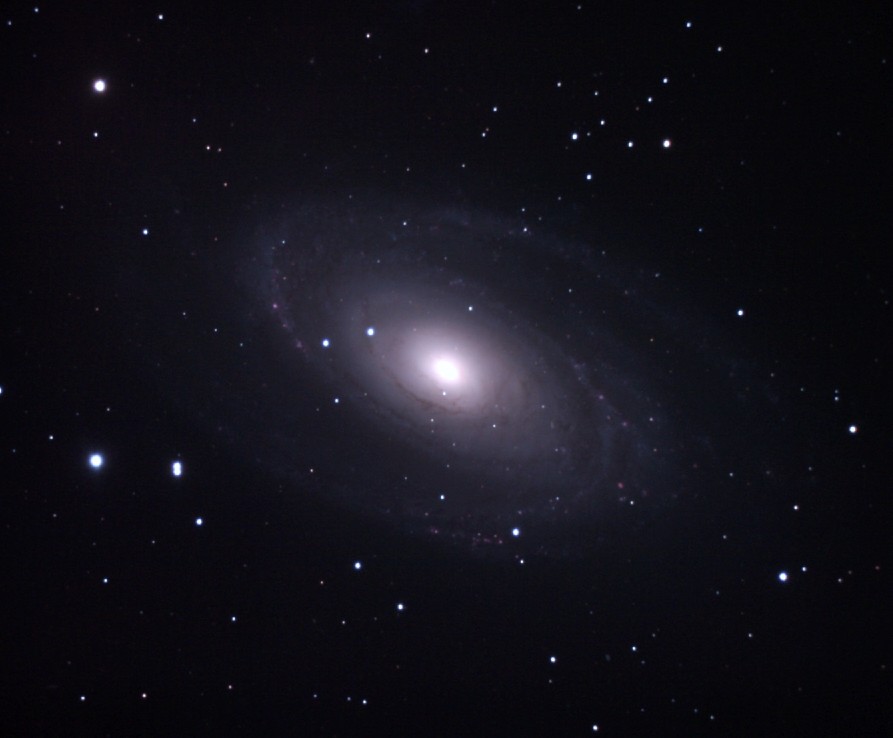
|
|
| M81, A spiral galaxy, sometimes called Bode's Nebula, Also known by the designation NGC3031 |
|
M81, is located about half way
between the outer lip of the Big Dipper and the North star. It can be
spotted with binoculars, and is an easy and pleasing target with a 4" or
larger telescope. It has a total visual brightness of about
6.8 magnitude, meaning you will need at least binoculars to see it, and has a visual size
of about 21x10 arc minutes, or at it's widest, about 1/2 the width of the
moon. It's actual size is about 100,000 light years in diameter, a little bigger than our Milky Way.
It is estimated to be about 12 million light years away from us, which is
relatively close. Our gravitationally connected sister galaxy Andromeda by
comparison is about 3-4 million light years away. Right next to M81 is its neighbor M82, just 3/4 degree away, a little harder to see with just binoculars. They don't just look close together, they are close together, their centers are only 150,000 light years apart. In fact the Hubble and other deep images of these two show there is a thin connecting link of stars, star clusters and gas trailing between them. This is a remnant of their last close encounter just 45 million years ago, quite recent on the cosmic time scale. During that encounter, the larger dominant M81 dramatically affected M82 (click the link to see what it looks like, and more about it). The encounter also left its effect on M81, making its spiral arms more pronounced. Astronomers figure they have been circling and coming closer for at least a billion years, and will eventually completely merge. There is an unusual thing about M81. Around most galaxies there is usually 6-7 times more mass of dark matter than the mass of all the material we can see. But with M81 the slow rotational speed of the spiral arms indicate there is less than a quarter of what we'd expect there. We know very little about dark matter, and so astronomers think trying to figure out this unique situation may lead to some insights about it and it's relationship to regular matter. |
|
10" F6.3
Schmidt Cassegrain reflector, Canon 40D DSLR camera at Prime focus |